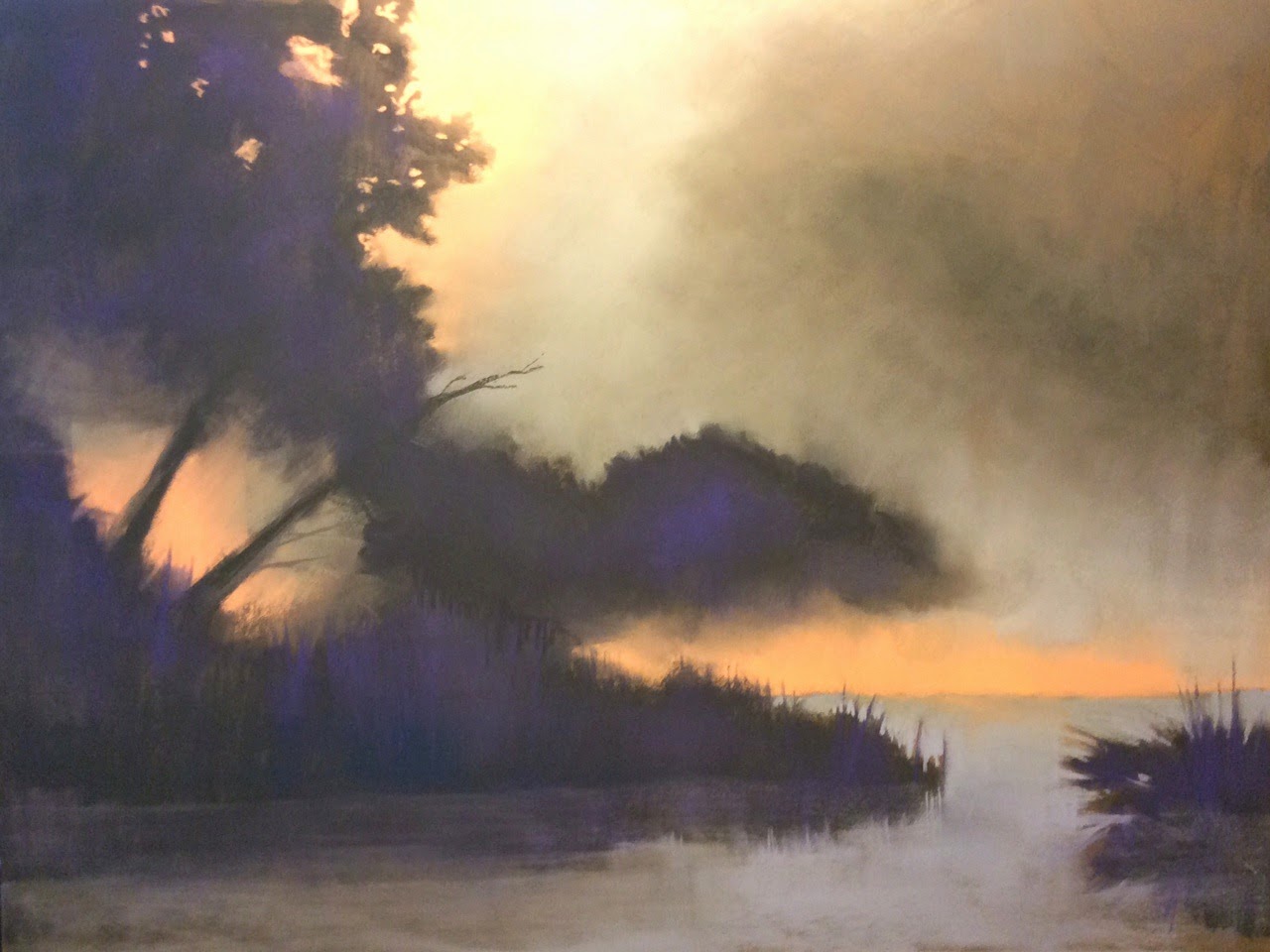What Lies Beneath
 |
Pastelist, Richard McKinley has this to say about the dry underpainting...
- Traditionally, harder sticks of pastel work best for dry pastel underpainting. They deposit a minimal amount of pigment, providing more control. When softer sticks are used, it's best to apply as little pastel as possible; otherwise, a heavy pastel layer will form.
- Richer pastel hues, those containing less grey, are also preferable, unless a muted undertone is desired.
- Surface will affect the final appearance by the nature of its base tone and tooth. The lighter the surface tone, the brighter the underpainting will appear.
- The tooth of the surface will affect how much pastel can be applied and drifted without being lifted.
- Tools used for smearing/drifting the pastel can be the artist's hand or any number of external devises such as a paper towel, leather chamois, a piece of plastic foam pipe insulation, or a plastic shopping bag. It is advisable to experiment before committing to a serious painting project.
Judy



Comments
Post a Comment